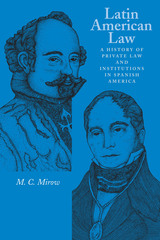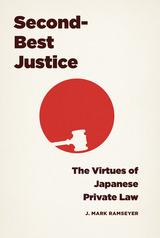
Private law is a familiar and pervasive phenomenon. It applies our deepest intuitions about personal responsibility and justice to the property we own and use, to the injuries we inflict or avoid, and to the contracts which we make or break. The Idea of Private Law offers a new way of understanding this phenomenon. Rejecting the functionalism popular among legal scholars, Ernest Weinrib advances the provocative idea that private law is an autonomous and noninstrumental moral practice, with its own structure and rationality. Weinrib draws on Kant and Aristotle to set out a formalist approach to private law that repudiates the identification of law with politics or economics. Weinrib argues that private law is to be understood not as a mechanism for promoting efficiency but as a juridical enterprise in which coherent public reason elaborates the norms implicit in the parties' interaction. The book combines philosophical exposition and legal analysis, and pays special attention to issues of tort law.
Private law, Weinrib tells us, embodies a special morality that links the doer and the sufferer of harm. Weinrib elucidates the standpoint internal to this morality, in opposition to functionalists, who view private law as an instrument in the service of external and independently justifiable goals. After establishing the inadequacy of functionalist approaches, Weinrib traces the implications of the formalism he proposes for our ideas of the structure, coherence, and normative grounding of private law. Furthermore, the author shows how this formalism manifests itself in the leading doctrines of private law liability. Finally, he describes the public but nonpolitical role of the courts in articulating the special morality of private law.

Private law touches every aspect of people's daily lives—landholding, inheritance, private property, marriage and family relations, contracts, employment, and business dealings—and the court records and legal documents produced under private law are a rich source of information for anyone researching social, political, economic, or environmental history. But to utilize these records fully, researchers need a fundamental understanding of how private law and legal institutions functioned in the place and time period under study.
This book offers the first comprehensive introduction in either English or Spanish to private law in Spanish Latin America from the colonial period to the present. M. C. Mirow organizes the book into three substantial sections that describe private law and legal institutions in the colonial period, the independence era and nineteenth century, and the twentieth century. Each section begins with an introduction to the nature and function of private law during the period and discusses such topics as legal education and lawyers, legal sources, courts, land, inheritance, commercial law, family law, and personal status. Each section also presents themes of special interest during its respective time period, including slavery, Indian status, codification, land reform, and development and globalization.

This wide-ranging book is a comparative study of the civil law, primarily the legal systems of western continental Europe and Latin America. It attempts to account for the distinctive features of civil law systems and hence to contribute to an understanding of the forces that cause law to change. The author contends that the basic differences between civil-law and common-law systems derive from legal history rather than from social, economic, or political developments. Above all, he argues, it was the acceptance of the authority of Justinian's Corpus Juris Civilis that determined the future nature of civil-law systems and gave them their distinctive character.
Mr. Watson outlines the features of Roman law as codified by Justinian that made it adaptable in countries with widely differing political systems, social structures, and local court practices. His learned and lucid exposition encompasses the role and influence of professors of Roman law in medieval universities; the manner and extent to which the case law of various countries drew upon the Corpus Juris; the role of the Institutes as a model for the institutes of local law which were the immediate ancestors of most of the national codes; and the effect of the Corpus Juris on basic features of the civil law, such as the fundamental division between public and private law, with different courts for the two, and the separation of commercial law from the rest of private law.
Scholars may debate his thesis, but none will dispute Alan Watson's command of the sources and his mastery of legal material spanning many centuries and countries. His book will present a challenge to legal historians and students of comparative law, and it will provide Anglo-American lawyers with insight into the nature of civil-law systems.

With Second-Best Justice, J. Mark Ramseyer offers a more compelling, better-grounded explanation: the low rate of lawsuits in Japan results not from distrust of a dysfunctional system but from trust in a system that works—that sorts and resolves disputes in such an overwhelmingly predictable pattern that opposing parties rarely find it worthwhile to push their dispute to trial. Using evidence from tort claims across many domains, Ramseyer reveals a court system designed not to find perfect justice, but to “make do”—to adopt strategies that are mostly right and that thereby resolve disputes quickly and economically.
An eye-opening study of comparative law, Second-Best Justice will force a wholesale rethinking of the differences among alternative legal systems and their broader consequences for social welfare.
READERS
Browse our collection.
PUBLISHERS
See BiblioVault's publisher services.
STUDENT SERVICES
Files for college accessibility offices.
UChicago Accessibility Resources
home | accessibility | search | about | contact us
BiblioVault ® 2001 - 2025
The University of Chicago Press









